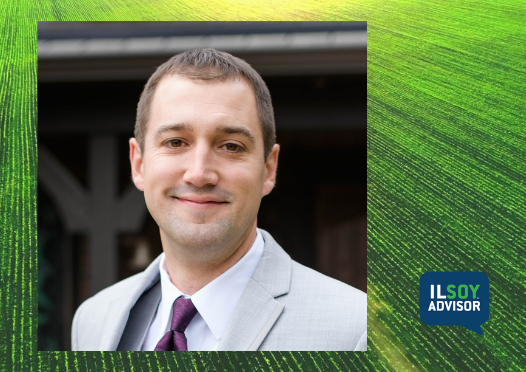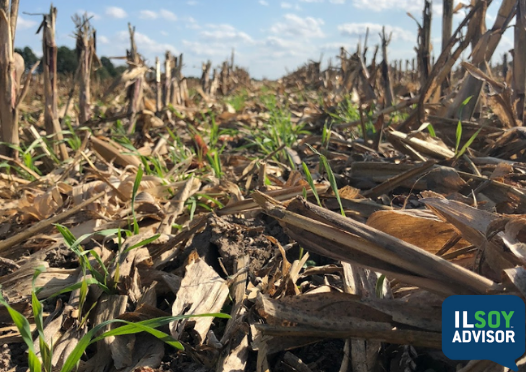ILSOYADVISOR POST
SHOWCASE FARMER: Adam Dahmer
The farmer. Adam Dahmer farms 1,200 acres near Marion in partnership with his father and brother. The land is planted in a 50-50 corn and soybean rotation.
Sustainability challenge. Several creeks, including Crab Orchard Creek and Saline Creek, run through the Dahmer farmland as part of a watershed that drains into the Mississippi River 50 miles away. “Are we considered a sensitive watershed today? No. In two years, we will be,” Adam Dahmer says. “The Mississippi is the next target for water quality and sustainability issues.”
Best management practices. Dahmer’s father adopted no-till before Adam Dahmer was born, more than 30 years ago,and the family began to plant cover crops in the early 2000s after the elder Dahmer found a low level of organic matter in their soil. Since 2012, they have planted cover crops on every acre.
The reason? “Soil health is the No. 1 key when it comes to production agriculture,” Adam Dahmer says. “Our job is to be a steward of the land, and we rely on our soils for our income. You’ve got to take care of the health of that soil to take care of yourself.”
In addition to cover crops and no-till, the Dahmers have regularly installed grassed waterways to offset erosion resulting from heavy rains and also have some tiled areas. They constantly monitor and evaluate the scope of cover crops and their impact on cash crops. Each year, they add or remove a type of cover crop depending on how the cash crop performs.
Next year, the Dahmers plan to plant corn into the hairy vetch cover crop with the goal of “spoon feeding” nitrogen to the corn crop. Hairy vetch at flowering stage can produce up to 180 pounds of nitrogen and after it’s killed they can retrieve about half of that.
One of the Dahmers’ major assets is a fertilizer/lime spreader equipped to with use Variable Rate Technology, which is used to apply all fertilizers with the exception of Nitrogen.
Sustainable start. Dahmer suggests it will take three to five years to realize the benefit of cover crops: an improved soil structure that will hold more water during heavy rains and minimize compacted layers, allowing crops to set deeper roots and better absorb nutrients. Annual rye grass, for example, can have roots up to six feet long, which will pull nutrients back into the zone of the cash crop. “You have to correct the abuse to the soil. Three years is a short time to correct something we’ve abused for generations.”
He adds that the use of no-till can be a boon to new farmers because it requires less equipment and reduces capital expense.
Dahmer wants other Illinois farmers to adopt sustainable practices now to ensure that government doesn’t impose new requirements for nutrient management. “We need to take action and get real serious about this real fast.”





Comments
Add new comment